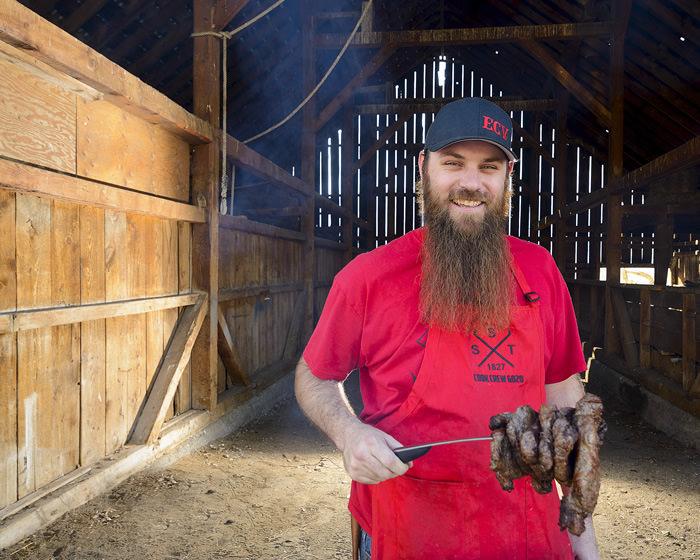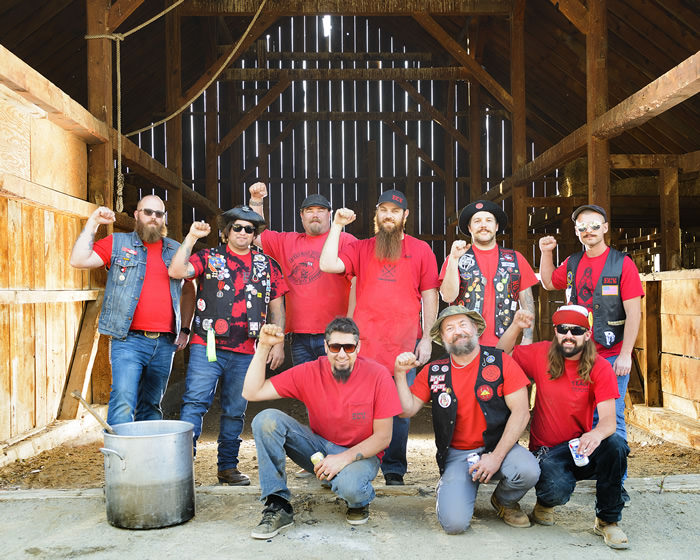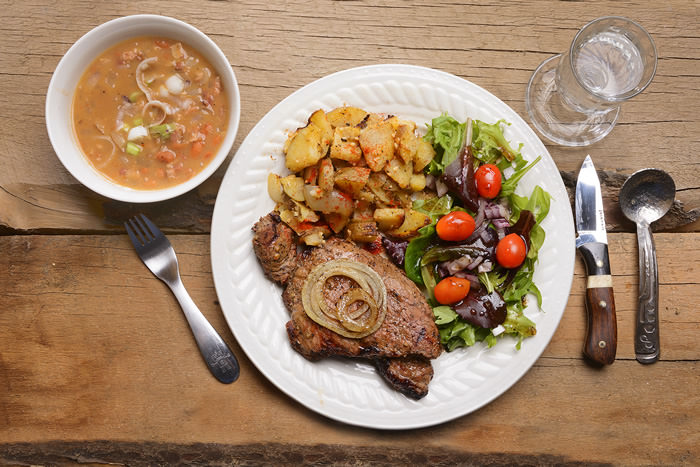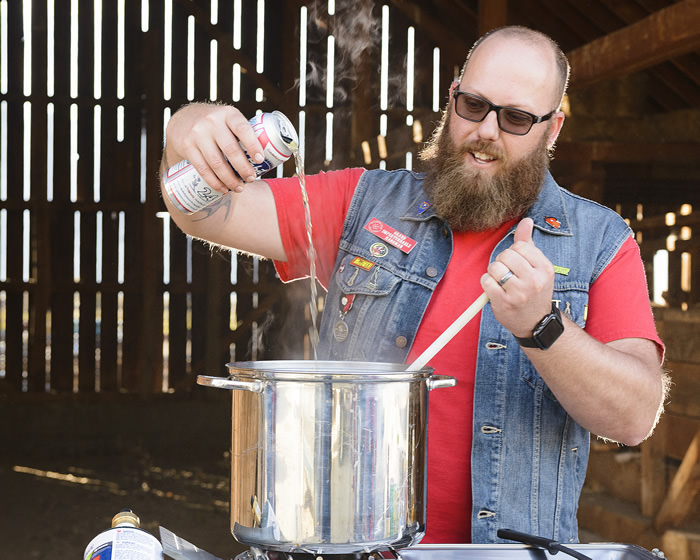Clampers’ cookin’ is best served with a side of history.
Beer is a well-used secret ingredient employed by everyone from celebrity chefs to backyard grill masters. But it is never utilized more than by the men of the Ancient and Honorable Order of E Clampus Vitus. For them, beer also is the secret ingredient that fuels the organization itself.
You may recognize these men — donning their signature red shirts and badge-clad leather vests — frequenting Nevada watering holes and areas of historical significance, but, to many, the nuts and bolts of the not-so-secret society remain somewhat of a mystery. E Clampus Vitus members refer to themselves as Clampers, but what is a Clamper?
The textbook recipe for a Clamper is as follows: In a mildly rusted, cast-iron cauldron, simmer several sizeable slops of western U.S. history, throw in some absurdity al dente, season generously with a few dashes of philanthropy, steep with a couple historical plaques, and, of course, don’t skimp on the secret ingredient. Serve warm with a side of steak and beans.
And if that recipe isn’t to your liking, maybe look to the ECV motto to understand what the group is all about: Credo quia absurdum, or “I believe because it is absurd.”

Beau Valory, cook for Snowshoe Thompson Chapter 1827, with steaks for a Clamper feast
Half-baked history
E Clampus Vitus was birthed by a practical joker from Virginia named Ephraim Bee in the mid-1800s. It made its way west to the California gold fields and the Comstock during the historic gold and silver rushes of the mid- to late-1800s.
In those days, members of secret societies such as the Masons and the Oddfellows often donned fancy suits, strutting through the mining camps, boasting their wealth and status, and turning their noses up at the droves of miners, who were considered second-class citizens. E Clampus Vitus, on the other hand, became a source of brotherhood and camaraderie for the mining class and a way to lampoon the wealthy secret societies.
Members of ECV substituted ritzy ensembles with plain red union suits, and fancy brooches and pins with beer-can cutouts. The group provided an escape from the hardships of mining life and embraced a lighthearted and facetious nature.
In 1956, the Snowshoe Thompson Chapter 1827 began in Douglas County, Nev., and Alpine County, Calif., before the addition of several other Nevada chapters. The modern organization embraces the group’s original principles — charity, brotherhood, and satisfactory absurdity — and also creates and places informative plaques at some of the West’s most historically significant locations.

Snowshoe Thompson Chapter 1827 Cook Crew. From left, Jordan Smith, DJ Kiltz, Bryce Lister,
Jesse Hellwinkel, Beau Valory, Jeff Loflin, John Pool, Josh Gardner, Eric Cachinero.
Cockamamie cuisine
Clampers also love food and are pretty good at making it in colossal quantities.
Each ECV chapter aims to erect at least one historical plaque in its respective geographical location each year, and when they do, members — often by the hundreds — attend and indulge in a weekend camping trip referred to as a “doins.” Someone’s got to feed hundreds of hungry Clampers, and that’s where each chapter’s cooking crew comes in.
“The food is usually pretty traditional and fares well in my book,” says Jeremy “Spoon” Wilson, noble grand humbug of the Snowshoe Thompson Chapter. “You can’t beat a hearty steak and beans after a long day of Clamping.”
He explains that the spread is never too gourmet but always scrumptious. You can expect to see the Clampers’ famous steak and beans served alongside bagged salad, dinner rolls, and potatoes, paired perfectly with a can of beer (and sometimes something stiffer).
And if you still don’t understand the ethos of E Clampus Vitus at this point, “Spoon” offers these parting words: “With enough spirits, Clampers will eat just about anything.”
Eric Cachinero is a native Nevadan, associate editor of Nevada Magazine, and member of the Snowshoe Thompson Chapter 1827 of the Ancient and Honorable Order of E Clampus Vitus. He prefers his steak and beans served on a paper plate and his Nevada history neat.

The finished Clamper feast: New York steak, spicy beans, potatoes, fresh salad, and a glass of moonshine
PBR Beans
(courtesy of Jordan “O-Ring” Smith, grand noble recorder, Snowshoe Thompson Chapter 1827 of the Ancient and Honorable Order of E Clampus Vitus in Douglas and Alpine counties. Serves 8 normal people, or 4 hungry Clampers)
4, 16-ounce cans pinto beans, drained
2 cups chicken broth
6, 12-ounce cans Pabst Blue Ribbon beer
Tony Chachere’s Creole Seasoning, to taste
Cavender’s All-Purpose Greek Seasoning, to taste
Some garlic
1 pound bacon, chopped
1 yellow onion, chopped
Worcestershire sauce, to taste
Garlic salt, to taste
Fry bacon in pan on medium heat. As bacon cooks, open one beer and drink. In large pot, add onion and garlic, cook on medium heat until aromatic, then add cooked bacon. At this point, you should be done with your first beer. Add 1 can of beer to pot, and open one for yourself. Bring pot to simmer; add chicken broth. Finish beer. Open beer. Take several drinks. Add Greek and Creole seasonings along with garlic salt. Add beans and several dashes of Worcestershire. Open beer and drink. Stir beans, simmer, drink, and repeat until all beer is gone. Enjoy beans. If beans taste bad and you don’t have a buzz, you did it wrong.


